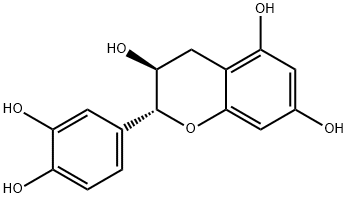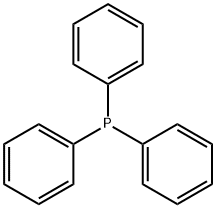Cianidanol
Synonym(s):(+)-Catechin;(+)-Cyanidanol;D -Catechin
- CAS NO.:154-23-4
- Empirical Formula: C15H14O6
- Molecular Weight: 290.27
- MDL number: MFCD00075649
- EINECS: 205-825-1
- SAFETY DATA SHEET (SDS)
- Update Date: 2024-12-18 13:37:16

What is Cianidanol?
Chemical properties
Tan Solid
The Uses of Cianidanol
Cianidanol, also known as (+)-catechin; (+)-3,3′4′,5,7-flavanepentol; 3,3′,4′, 5,7-pentahydroxyflavane, [R,3S]-2-[3,4-dihydroxyphenyl]-3,4-dihydro-1[2H]- benzopyran-3,4,7-triol, or 2-(3,4-dihydroxyphenyl)-3,4-dihydro-(2r-trans)-2h- 1-benzopyran-7-triol, is a flavonoid associated with a variety of blood disorders. An association of cianidanol and immune hemolytic anemia and thrombocytopenia has been suggested in numerous case reports. In several reports, the presence of flavonoid-dependent antibodies against red blood cells is evident with cianidanol combining with erythrocyte membranes and inducing development of autoantibodies and antibodies.Several patients had platelet antibodies with increased serum-bindable IgG values without the presence of cianidanol and several with high platelet-associated IgG levels.Antibodies against cianidanol were not detectable in certain cases.The hemolytic anemia caused acute renal failure in some patients and can be life threatening, leading to fatalities. Upon cessation of treatment with cianidanol, hematology appears to return to normal over time.
These side effects do not appear to be specific to cianidanol as the formation of IgE and IgG antibodies to troxerutin (Venoruton) and silymarin (Kegalon) was also evident with patients presenting with fever, skin eruptions, and intravascular hemolysis often demonstrating high IgG titers.Furthermore, cianidanol-induced hemolysis might also occur after sensitization by other flavonoids including rutin.
The Uses of Cianidanol
procollagen production inhibitoe, hepatoprotectant
The Uses of Cianidanol
Labelled (+)-Catechin (C217500). (+)-Catechin is a flavonoid found primarily in higher woody plants as (+)-Catechin along with (-)-Epicatechin (cis form). Antidiarrheal.
Background
An antioxidant flavonoid, occurring especially in woody plants as both (+)-catechin and (-)-epicatechin (cis) forms.
What are the applications of Application
Catechin is a natural flavonoid reagent with anti-tumor properties
Definition
ChEBI: The (+)-enantiomer of catechin and a polyphenolic antioxidant plant metabolite.
brand name
Ausoliver;Cirramina;Transepar.
World Health Organization (WHO)
Cianidanol, which is extracted from the tropical plant Uncaria gambir, was introduced in 1976 as an adjunct in the treatment of liver disorders. Following a cluster of cases of haemolytic anaemia reported in 1985 from Naples, Italy, four of which were fatal, the company suspended sales worldwide. Although subsequently reintroduced in Switzerland and France for the treatment of acute and chronic hepatitis-B, it was later definitively withdrawn in Switzerland on detailed reassessment and the manufacturer has now withdrawn the product worldwide.
General Description
(+)-Catechin is an important beneficial compound, belonging to the flavonoid class, which is present abundantly in red wine.
Metabolism
Not Available
Properties of Cianidanol
| Melting point: | 175-177 °C (anhydrous)(lit.) |
| Boiling point: | 352.36°C (rough estimate) |
| alpha | D18 +16 to +18.4° |
| Density | 1.2451 (rough estimate) |
| refractive index | 1.4359 (estimate) |
| storage temp. | 2-8°C |
| solubility | DMSO (Slightly), Methanol (Slightly), Water (Slightly, Sonicated, Heated) |
| form | neat |
| form | Solid |
| pka | 9.54±0.10(Predicted) |
| color | Light Orange to Light Brown |
| Merck | 14,1902 |
| CAS DataBase Reference | 154-23-4 |
| EPA Substance Registry System | 2H-1-Benzopyran-3,5,7-triol, 2-(3,4-dihydroxyphenyl)-3,4-dihydro-, (2R,3S)- (154-23-4) |
Safety information for Cianidanol
| Signal word | Warning |
| Pictogram(s) |
 Exclamation Mark Irritant GHS07 |
| GHS Hazard Statements |
H315:Skin corrosion/irritation H319:Serious eye damage/eye irritation H335:Specific target organ toxicity, single exposure;Respiratory tract irritation |
| Precautionary Statement Codes |
P261:Avoid breathing dust/fume/gas/mist/vapours/spray. P264:Wash hands thoroughly after handling. P264:Wash skin thouroughly after handling. P271:Use only outdoors or in a well-ventilated area. P280:Wear protective gloves/protective clothing/eye protection/face protection. P302+P352:IF ON SKIN: wash with plenty of soap and water. P305+P351+P338:IF IN EYES: Rinse cautiously with water for several minutes. Remove contact lenses, if present and easy to do. Continuerinsing. |
Computed Descriptors for Cianidanol
| InChIKey | PFTAWBLQPZVEMU-DZGCQCFKSA-N |
New Products
(S)-3-Aminobutanenitrile hydrochloride 4-Methylphenylacetic acid N-Boc-D-alaninol N-BOC-D/L-ALANINOL Tert-butyl bis(2-chloroethyl)carbamate 3-Morpholino-1-(4-nitrophenyl)-5,6-dihydropyridin- 2(1H)-one Furan-2,5-Dicarboxylic Acid Tropic acid 1-Bromo-3,5-Di-Tert-Butylbenzene S-2-CHLORO PROPIONIC ACID ETHYL ISOCYANOACETATE 2-Bromo-1,3-Bis(Dimethylamino)Trimethinium Hexafluorophosphate 4-IODO BENZOIC ACID 3-NITRO-2-METHYL ANILINE 1-(2,4-DICHLOROPHENYL) ETHANAMINE (2-Hydroxyphenyl)acetonitrile 4-Bromopyrazole 2-(Cyanocyclohexyl)acetic acid 4-methoxy-3,5-dinitropyridine 1-(4-(aminomethyl)benzyl)urea hydrochloride 2-aminopropyl benzoate hydrochloride diethyl 2-(2-((tertbutoxycarbonyl)amino) ethyl)malonate tert-butyl 4- (ureidomethyl)benzylcarbamate Ethyl-2-chloro((4-methoxyphenyl)hydrazono)acetateRelated products of tetrahydrofuran








You may like
-
 (+)-Catechin CAS 154-23-4View Details
(+)-Catechin CAS 154-23-4View Details
154-23-4 -
 2033-24-1 98%View Details
2033-24-1 98%View Details
2033-24-1 -
 1975-50-4 98%View Details
1975-50-4 98%View Details
1975-50-4 -
 2-HYDROXY BENZYL ALCOHOL 98%View Details
2-HYDROXY BENZYL ALCOHOL 98%View Details
90-01-7 -
 2-Chloro-1,3-Bis(Dimethylamino)Trimethinium Hexafluorophosphate 221615-75-4 98%View Details
2-Chloro-1,3-Bis(Dimethylamino)Trimethinium Hexafluorophosphate 221615-75-4 98%View Details
221615-75-4 -
 61397-56-6 CIS BROMO BENZOATE 98%View Details
61397-56-6 CIS BROMO BENZOATE 98%View Details
61397-56-6 -
 14714-50-2 (2-Hydroxyphenyl)acetonitrile 98+View Details
14714-50-2 (2-Hydroxyphenyl)acetonitrile 98+View Details
14714-50-2 -
 118753-70-1 98+View Details
118753-70-1 98+View Details
118753-70-1